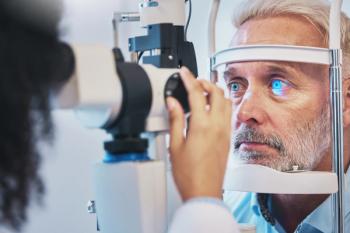
Regulations are stifling medical manufacturing and automation can help
Key Takeaways
- Medical device manufacturers face unique challenges, including stringent regulations and complex supply chains, alongside common industry issues like tariffs and labor shortages.
- Automation enhances production speed, quality, and cost-efficiency, while mitigating legal liabilities and ensuring regulatory compliance.
Automation eases the burden on medical device manufacturers across nearly every phase of development, production, and oversight.
No industry has had an easy time with manufacturing since the COVID-19 pandemic, but the medical device manufacturing sector has faced especially steep challenges. In addition to the problems plaguing other industries, medical device manufacturers are also forced to navigate a complex range of regulations that significantly limit their flexibility at every turn. Failure to comply with these regulations can expose these manufacturers to significant legal damage and financial consequences.
Nonetheless, the medical device market has continued to expand at a rapid pace. It’s currently
competitive market, speed-to-market is critical, especially given the often-steep development costs. On one hand, medical device manufacturers must keep up with this pace of competition if they want to succeed. On the other hand, they must adhere to stringent safety protocols all while navigating the ever-present complexities of the global supply chain. It is for these reasons that the industry has increasingly embraced automation.
Automation eases the burden on medical device manufacturers across nearly every phase of development, production, and oversight. It speeds up production, enhances product quality and safety, and reduces costs at a time of contracting budgets. It is actively reshaping not only how devices are made, but also how medical supply chains operate worldwide.
Understanding the medical device landscape
Some of the challenges facing medical device manufacturers mirror those of other industries:tariffs on Chinese imports; rising offshore labor costs, especially in China; and domestic labor shortages, all continue to cause disruptions. Volatile fuel prices and ongoing geopolitical tensions have further strained budgets.
For the U.S. specifically, changes implemented during the current administration, such as reduced reliance on imports and immigration, have forced local labor into manufacturing roles, often on short notice. As a result, costs and skill gaps in manual-intensive processes have increased. Alternatively, automation offers a more stable, cost-efficient alternative, as it requires fewer personnel.
What makes the situation uniquely challenging for medical device manufacturers is the intense focus on traceability and quality assurance demands, which grow even more complicated under the differing rules of regulatory bodies like the FDA in the U.S. and the MDR in Europe. These challenges are heightened by the critical nature of the products themselves. A defective run of basketballs or flat-screen televisions may be one thing, but a defective batch of insulin pens or hearing aids can have life-or-death consequences.
While the automation of various parts of the medical device manufacturing process has long been feasible, many companies, particularly smaller ones, have been hesitant to implement it due to the high perceived costs coupled with a desire to maximize the profit-potential of existing processes. However, this state of affairs is changing dramatically, with the manufacturing robotics industry
The rapidly decreasing cost structure of industrial automation devices has played a significant role in this expansion. In just a few short years, technology has been brought within reach of a far larger segment of the market, particularly smaller companies that previously could not justify the cost.
Automation is reshaping the field
There are three key areas in which automation has reshaped the medical device manufacturing process: legal liability, speed to market, and regulatory compliance.
Legal liability
Human personnel are prone to errors, particularly when assembling or inspecting hundreds of syringes, auto-injectors, or inhalers during a single shift. Even one single mistake can lead to major consequences for both patients and manufacturers.Manufacturers, therefore, strive to develop their products in such a way that application errors can be ruled out as far as possible.
It’s important to note that while machine manufacturers are not directly responsible for patient safety, there are exceptions. In joint ventures, or in cases where a system fails to detect and reject defective parts, liability may be traced back to the system manufacturer.
Designing systems that can operate in an error-proof manner minimizes the likelihood of operator mistakes, regardless of skill level. The more intuitive and error-resistant the system, the lower the risk of human-induced failure.
Standardized assembly processes, built on proven and reliable developments in the field, are the most practicable and cost-effective way to mitigate against these hazards.
Let's use the example of a machine that can rapidly produce PCR tests. With high-speed robots managing assembly, manufacturers can be assured of quality control. Meanwhile, automated testing can flag if and when there are leaks or malfunctions in real time, allowing human personnel to take instant action.
Speed-to-market
Medical device manufacturers are caught between two seemingly impossible-to-reconcile demands: the need to develop products and bring them to market as fast as possible to compete in a cutthroat global marketplace and the need to ensure these products are not only functional, but entirely safe.
In this context, automation has emerged as the key driver of innovation. Programmable robotic systems can take over the delicate and repetitive work involved in device assembly, inserting micro components or sealing enclosures. In the process, they can eliminate human error and enable 24/7 production.
There are even different assembly lines designed to meet the needs of production. Low-volume and high-flexibility environments, such as pilot lines or custom implant products, utilize modular workstations and collaborative robots (cobots) that allow for quick reconfiguration. On the other hand, large-scale production of items like insulin pens or catheters is often based on fully automated rotary indexing systems or continuous motion assembly lines, which are optimized for precision and scalability.
Regulatory compliance
Regulatory compliance is the most important step in the medical device manufacturing process. It is also historically the most time-consuming. Manufacturers must maintain strict adherence to quality management standards, device tracking protocols, and post-market surveillance requirements. Any change to a device’s design, materials, or manufacturing process can trigger fresh rounds of validation, documentation, and in some cases, re-approval from regulators across different jurisdictions.
As the growth of the medical
Falc Borchard is Vice President, Sales & Marketing North America, at
Newsletter
Stay informed and empowered with Medical Economics enewsletter, delivering expert insights, financial strategies, practice management tips and technology trends — tailored for today’s physicians.















